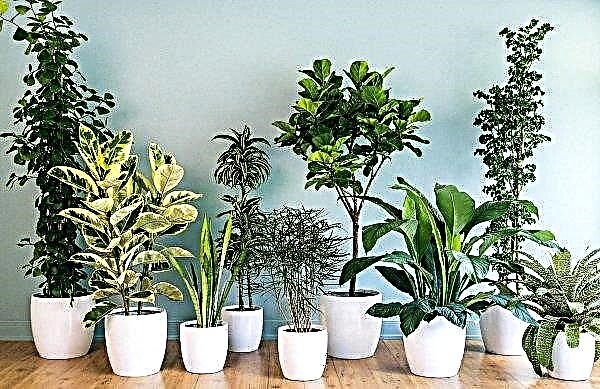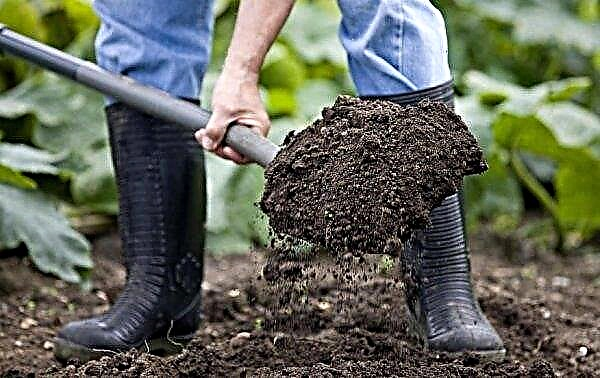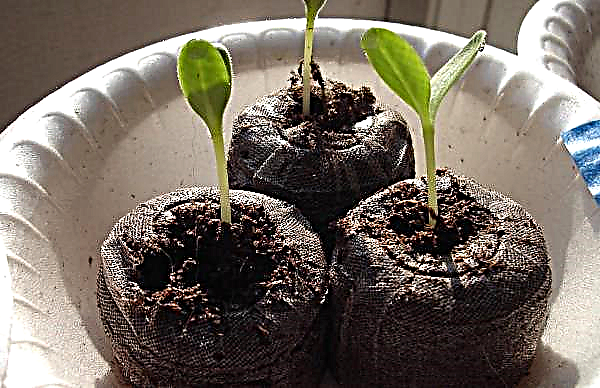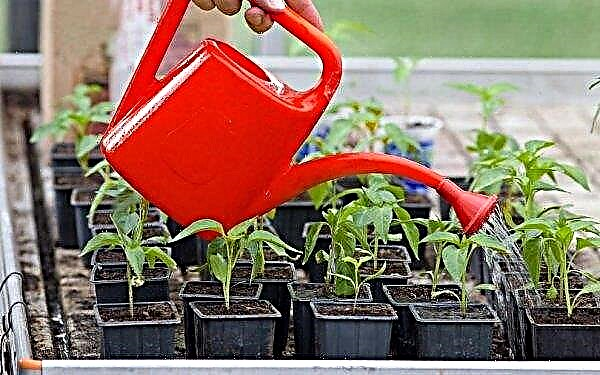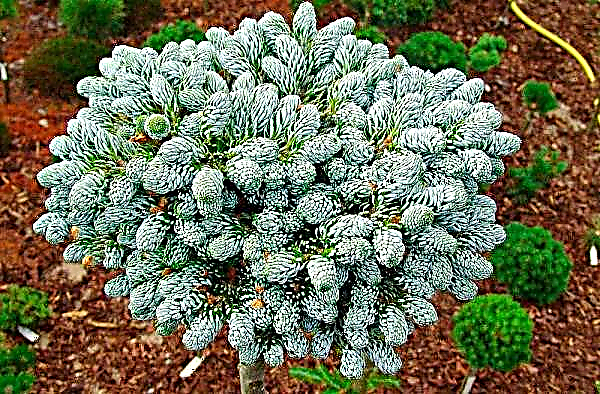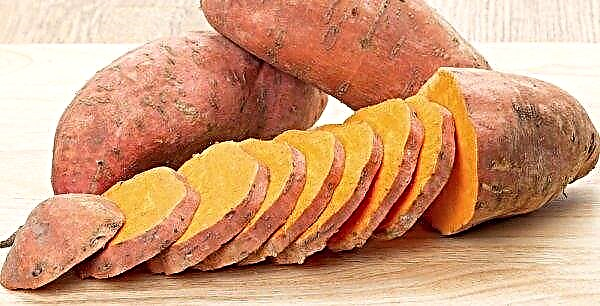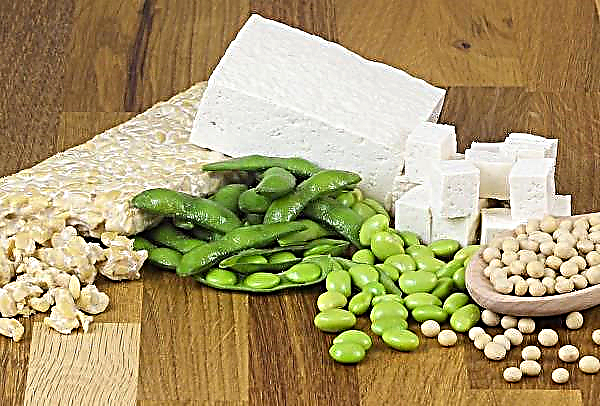It is important to collect eggplant in time from the beds during the period of technical maturity. Overripe fruits of this culture can change their color and begin to be very bitter. We learn what to do if mature eggplants turn green, and whether they can be eaten, how to prevent this.
Did you know? There are varieties of eggplant in which solanine simply does not accumulate. First of all, these are varieties with a white peel. There are varieties with the usual dark violet peel (Alekseevsky, Lilac, Banana, Sailor) - they have delicate white flesh and thin skin. They lack bitterness and do not change color when overgrown, there is no green color of the fruit at the tail.
Why do ripe eggplants turn green?
Eggplants, like all nightshade crops, can accumulate the toxic alkaloid solanine. It is this alkaloid that gives them a taste of bitterness. In young fruits, its content is tolerable and quite acceptable, but when overripe, they begin to strongly bitter and change color to green, yellow or brown. The pulp inside quickly turns brown, and the seeds become ripe and also darken. It should be noted that there are varieties of eggplant with greenish skin tones at maturity. They are popular in Asia, but we also have, for example, the Emerald variety, which has a green or whitish peel and creamy white flesh that is not bitter and has a smack of mushrooms. And sometimes eggplants do not turn blue due to the fact that their development is inhibited by an excess of nitrogen or the fruits lighten and do not turn blue due to lack of light.
They are popular in Asia, but we also have, for example, the Emerald variety, which has a green or whitish peel and creamy white flesh that is not bitter and has a smack of mushrooms. And sometimes eggplants do not turn blue due to the fact that their development is inhibited by an excess of nitrogen or the fruits lighten and do not turn blue due to lack of light.
Did you know? Elevated doses of solanine can be found in potatoes that have sprouted or turned green in the sun. Most of all, it is concentrated in sprouts and skin. There is also a harmful alkaloid in unripe tomatoes, but when they grow and begin to change color, then they can be used for harvesting.
What to do and is it possible to eat such eggplant?
Strongly overgrown greening fruits can be left on the seeds. Of these, it is best to select the largest and most beautiful specimens for seed. It is necessary to wait until the peel on the selected fruits begins to dry, rip them off and place in a dark place. After 1-2 weeks, the seeds will finally ripen, and they can be collected. It is impossible to eat the greened overgrown fruits in food, if you do not previously remove the harmful alkaloid, and it is quite possible to remove it. With solanine poisoning, nausea, vomiting, stomach pain, migraine, fever, diarrhea, disorientation are observed. Then it is necessary to rinse the stomach, and take sorbents (white coal, Enterasgel). If threatening symptoms are observed (loss of consciousness, cramps, palpitations), then immediate medical attention is needed. With constant consumption of small doses, skin rashes, sores in the mouth, and sleep disturbances can be observed.
With solanine poisoning, nausea, vomiting, stomach pain, migraine, fever, diarrhea, disorientation are observed. Then it is necessary to rinse the stomach, and take sorbents (white coal, Enterasgel). If threatening symptoms are observed (loss of consciousness, cramps, palpitations), then immediate medical attention is needed. With constant consumption of small doses, skin rashes, sores in the mouth, and sleep disturbances can be observed.
Important! The skin from green fruits must be cut off.
The following manipulations significantly reduce the concentration of solanine:
- Cut eggplant (cubes, circles, sticks) and sprinkle with salt. Leave for 30-60 minutes to let the juice flow. Then drain the juice, and rinse the slices well several times with water, washing large seeds, put in a colander and squeeze.
- Slices are soaked in salted water (1 tbsp. L salt per 1 liter of water) for 30 minutes, and then squeezed.
- The fruits are blanched for 5 minutes. with a quiet boil. After this, not only the bitterness goes away, but the skin is also easily removed.
- If the seeds are small, and the eggplants are bitter, then it is enough to sprinkle them with salt for 30 minutes, and then squeeze.

How to prevent green eggplant?
In order for the blue ones not to change color due to overgrowing, they should be collected on time - during technical ripeness. It is best to collect young, somewhat immature eggplants with thin peels and unformed seeds. Technical maturity can be easily determined by touch directly on the bush - you need to press the fruit with your finger.
Important! Ungrown eggplants can also be bitter - in dry weather, when there is a lack of watering, solanine is strongly accumulated in them.
If a small dent forms, which disappeared within a couple of seconds, then they can already be collected, and if there is no trace left when pressed, then it is necessary to wait for maturation. If the recess is too deep and has not disappeared, then this is an overripe vegetable and it must be left on the seeds or processed to reduce solanine. In such a fruit, the gloss from the peel disappears.
Useful tips for growing eggplant
Experts give such useful recommendations for growing blue ones:
- For planting eggplant, you need to choose a place that is sufficiently lit and protected from gusts of wind.
- Planting can not be thickened, and sometimes it makes sense to remove leaves that shade flowers and fruits.
- Crop rotation must be observed. You should not plant this plant culture on a site where the predecessors were tobacco, tomatoes, potatoes and eggplant themselves.
- To increase the yield of these vegetables, the soil must be well fertilized before planting. For this purpose, organic fertilizers are best suited - mullein, bird droppings or humus. If the soil is acidic, then to reduce the acidity you need to use dolomite flour at the rate of 2 tbsp. tablespoons per 1 m².
- In each hole for planting, it is recommended to throw a handful of wood ash or pour a solution of manganese at the rate of 1.5 liters per 1 plant.
- Seedlings are planted when the soil warms up to + 15 ° C, and the air temperature reaches + 18 ° C.
- It should be watered under the root with warm water at least once every 7 days. During fruiting, watering should be increased up to 2 times in 7 days, and in hot weather every 2-3 days. After irrigation or rain, it is necessary to loosen the soil and remove weed grass regularly.
- To obtain a high yield should be made for the entire growing season of feeding at least 3-4 times. The first fertilizer application is carried out 2-3 weeks after planting. For this purpose use complex top dressing such as "Mortar", "Kemira". During fruit ripening, it is better to use nitrogen-containing fertilizers (moderately) and phosphates. During fruiting, it is useful to sprinkle the beds with wood ash.
- In order to improve flowering and ovary formation, bushes can be treated with boric acid at the rate of 2 g per 10 l bucket of warm water.
The greening of the fruits may indicate the overgrowth of eggplant and the presence of an increased amount of toxic alkaloid solanine. In this case, the fruits must be properly processed to reduce their level, otherwise their consumption can cause poisoning.


